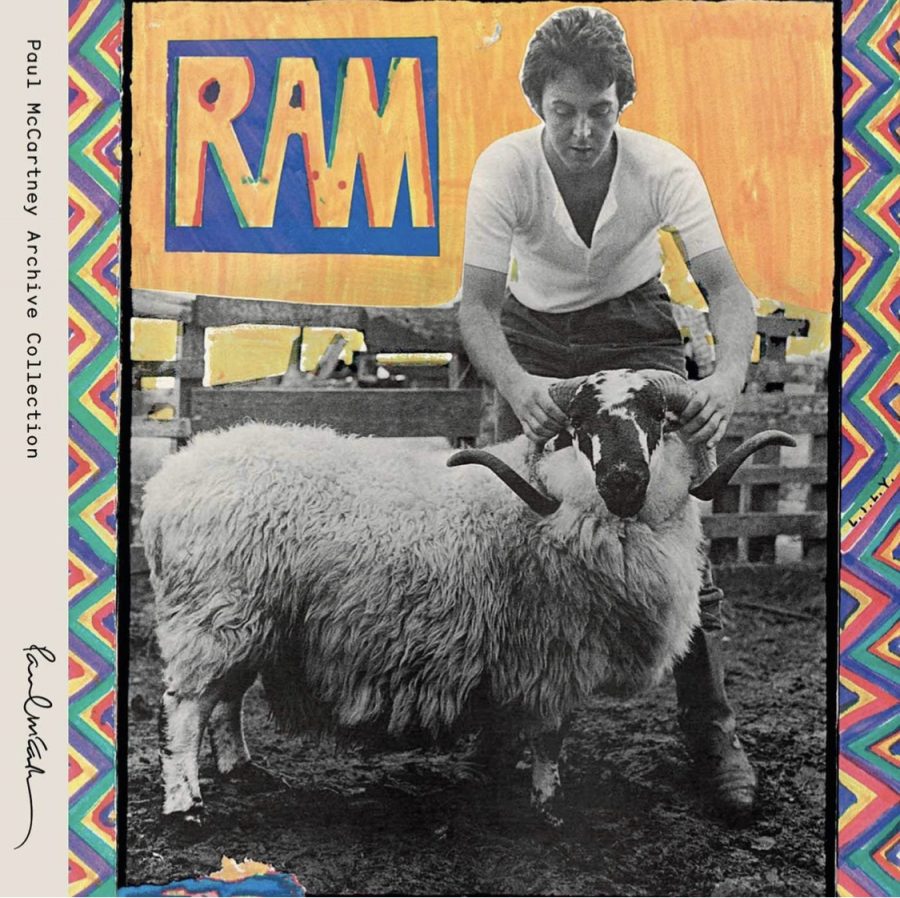Why Ram by Paul McCartney is the Precursor to Indie Rock
April 2, 2021
Coming off of the international mega success of The Beatles, Paul McCartney set off on an achievement filled career, finding prosperity in pursuing his own personal music stylings. In 1971 McCartney released Ram, following his debut album, that released just a week after the breakup of The Beatles. And while McCartney I was considered a classic album years later, it was initially overlooked and overshadowed by the extremely publicized Beatles breakup. Ram, however, introduced Paul McCartney in a whole new light.
Instead of the dynamic powerhouse that had been the Lennon/McCartney writing team, we instead find Paul as his own person. This brings a light, breezy writing style that reflected his life situation. Living on a farm in Scotland with his wife, Linda who was also credited on this record, McCartney felt liberated and peaceful. Those feelings are definitely represented on the record with songs like “Eat at Home” which reflects marital and domestic bliss, and “Heart of the Country”, which gives Paul’s perspective on isolation and seclusion in the heart of Scotland. But of course it would never be a true solo album without a diss on John Lennon. “Too Many People” is a scorcher that showed McCartney’s true feelings on the Apple Corps. debacle and the legal issues surrounding The Beatles breakup. But the album of a whole reflects a care free and folksy perspective on the music seen from Paul McCartney in the past.
With production elements such as echoey guitars twanging, bongos, organs and ukulele, McCartney delivered surrounding, encompassing sounds that are best enjoyed with headphones turned up high, but also cute twangy numbers that could be the perfect background music or just driving in the car music. Elements such as harmonies with his wife, on the track “Dear Boy”, become reminiscent of the Beach Boys, with shuffling drums and long and in depth harmonies throughout. Almost every track on the album is rife with rich elements that give the album a ton of character that wasn’t as visible in McCartney’s previous endeavors, but makes this album stand out among every solo album of not only McCartney, but many albums of the seventies including the other Beatles albums, and Fleetwood Mac.
And even though it didn’t outsell or perform as well critically as the other Beatles albums such as the iconic All Things Must Pass by George Harrison, or Plastic Ono Band by John Lennon, it is considered as one of the precursors to the Indie music of the future. Ram possesses many of the melodic elements that Indie music has been modeled after. Specifically the use of guitar, using overdrive and phaser effects to make a deeper rich sound that can be traced to The Beatles but also is so prominent in Ram. McCartney also utilizes strings and horns to delve further into the rich nature of some of the songs. Ram offers a variety of musical stylings that delineate this album from other comparable records. One of the most prominent aspects of this album that translates especially well to Indie music is the lyrical makeup of the songs on the album. Using many poetic devices to translate feelings of happiness or dis contempt into accessible yet whimsical metaphors that pull the listener in, and leave them questioning half of what was just heard. Similar to songs on Sgt. Pepper’s Lonely Hearts Club Band, there is a psychedelic aspect to many songs found on Ram with the use of characters and clouded over drug references on songs like “ Uncle Albert/ Admiral Halsey” or “Monkberry Moon Delight”. All of these aspects really make the album so spectacular, and while many would consider the album to be relatively low key and folksy, in others eyes it would be considered as the first Indie Rock album. And that categorization really makes the album stand out and makes it such a classic. The 12 songs found on Ram offer genre defining, innovative music that can be enjoyed by anyone. Overall Ram gave Paul McCartney another revolutionary album to add to his repertoire of musical genius and defined a new genre that sculpted music for decades after.


